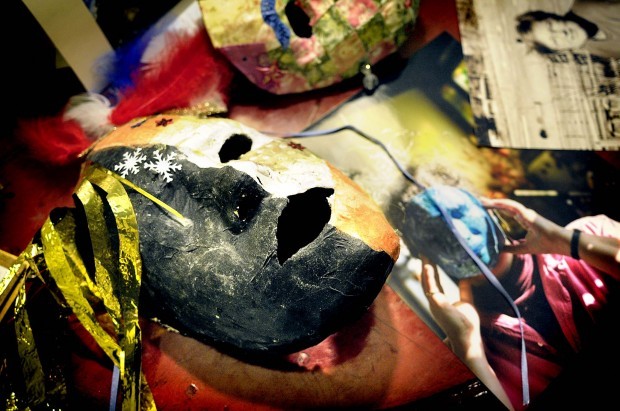

His influence and appreciation of her vision encouraged both her art and life. She continued her art-theology dialogue by living in a Zen monastery for three years and to Ananda Ashram in the 1980s where she studied with Dr. Of this decision to sing, Montano would later ask, "Don't singing words go to a more sensitive part of the brain than do spoken words?" Montano, face covered in acupuncture needles, intones the events in a monk-like drone. In her video/performance "Mitchells' Death" (1978), Montano outlines the story: receiving the call, remembering their relationship, waves of care provided by her romantic partner, composer and musician Pauline Oliveros, deciding to attend the funeral. The accidental death of her by-then-ex husband by gunshot wound led to further exploration of art as a healing modality.

There she established herself with performances like "Handcuff" (1973 with Tom Marioni) where she was physically tied to other artists, and "Three Day Blindfold" (1974), where she lived for three days blindfolded and had to find her way around. Montano moved to San Francisco 1970 with her husband, Mitchell Payne.

It was titled "The Chicken Show" from 1969. There she exhibited nine live chickens in three 8-foot (2.4 m) by 16-foot-long (4.9 m) minimalist chicken wire cages on the roof of the art building. Montano's first major performance, Chicken Woman (1972) was based on her MFA sculpture show at the University of Wisconsin, Madison. During this period, Montano drifted away from the Catholic Church, but despite this loss of faith, she consistently acknowledged the influence of her strict Catholic upbringing on her work - for instance in how the discipline of convent life and her family's loyal work-ethic made her able to carry out extremely disciplined performances in her later career. Around this time she married the photographer Mitchell Payne. After two years with the order, however, Montano was suffering from severe anorexia, and she left to return to her former college, from which she graduated in 1965 as a sculptor.ĭuring the rest of the 1960s, Montano continued to study and began performing, and by 1971 she was devoting herself exclusively to performance art. Both her parents played in an orchestra but Linda's fascination with Catholic ritual and desire to do humanitarian service led her to join the novitiate of the Maryknoll Sisters after one year studying at the College of New Rochelle. Montano was raised in a devoutly Roman Catholic household, partly Irish and partly Italian, surrounded by artistic activity. Linda Mary Montano (born January 18, 1942, Saugerties, New York) is an American performance artist. Anthony Award, Window for Peace (February 1988)īessie Award for Innovative Artists (Seven Years of Living Art, 1992)īest Performance Artist (Chronogram, 2000) ARTIES Award, 1st Annual Performance Art Award, Franklin Furnace (1986)


 0 kommentar(er)
0 kommentar(er)
